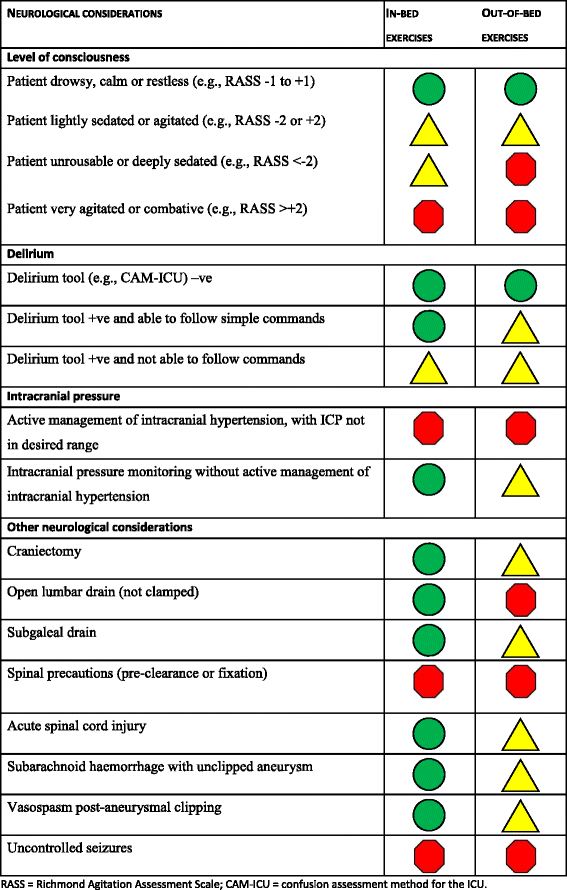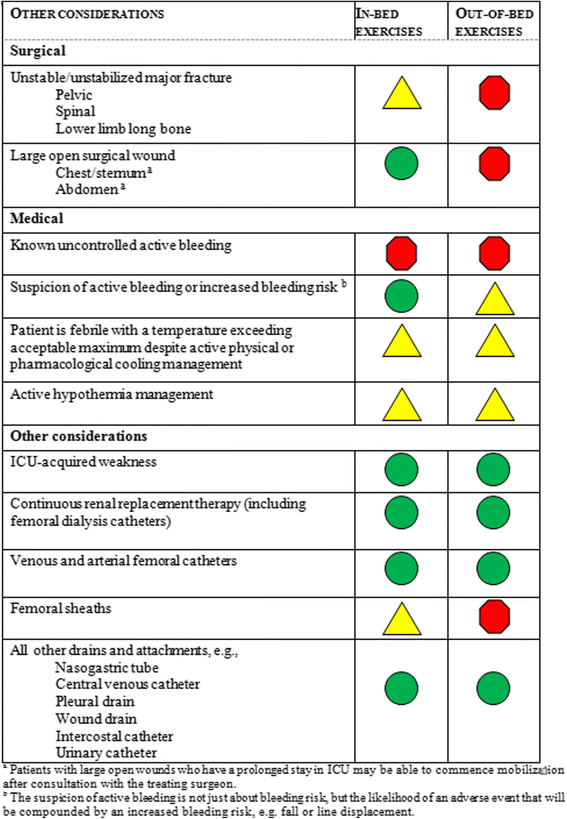Expert consensus and recommendations on safety criteria for active mobilization of mechanically ventilated critically ill adults
- PMID: 25475522
- PMCID: PMC4301888
- DOI: 10.1186/s13054-014-0658-y
Expert consensus and recommendations on safety criteria for active mobilization of mechanically ventilated critically ill adults
Abstract
Introduction: The aim of this study was to develop consensus recommendations on safety parameters for mobilizing adult, mechanically ventilated, intensive care unit (ICU) patients.
Methods: A systematic literature review was followed by a meeting of 23 multidisciplinary ICU experts to seek consensus regarding the safe mobilization of mechanically ventilated patients.
Results: Safety considerations were summarized in four categories: respiratory, cardiovascular, neurological and other. Consensus was achieved on all criteria for safe mobilization, with the exception being levels of vasoactive agents. Intubation via an endotracheal tube was not a contraindication to early mobilization and a fraction of inspired oxygen less than 0.6 with a percutaneous oxygen saturation more than 90% and a respiratory rate less than 30 breaths/minute were considered safe criteria for in- and out-of-bed mobilization if there were no other contraindications. At an international meeting, 94 multidisciplinary ICU clinicians concurred with the proposed recommendations.
Conclusion: Consensus recommendations regarding safety criteria for mobilization of adult, mechanically ventilated patients in the ICU have the potential to guide ICU rehabilitation whilst minimizing the risk of adverse events.
Figures





References
Publication types
MeSH terms
LinkOut - more resources
Full Text Sources
Other Literature Sources
Medical

